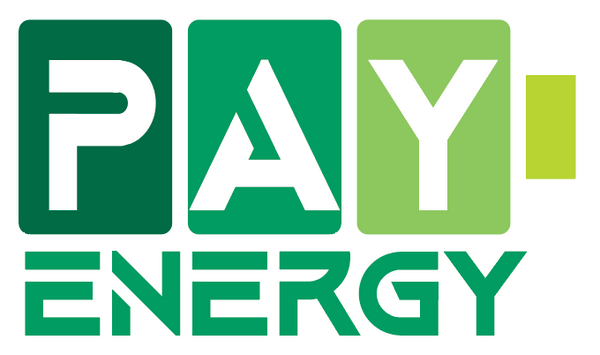
Commercial DC Fast Charging ROI Calculator for 2025
Share
Understanding Commercial DC Fast Charging ROI Fundamentals
Return on investment calculations for commercial DC fast charging infrastructure require comprehensive analysis of multiple variables that significantly impact profitability. Property owners, fleet operators, and parking lot managers must evaluate capital expenditures, operational costs, revenue streams, and market dynamics to make informed deployment decisions.
The commercial DC fast charging landscape presents unique opportunities for revenue generation through strategic infrastructure placement and operational optimization. Initial capital investment encompasses hardware procurement, installation costs, electrical infrastructure upgrades, permitting fees, and ongoing maintenance considerations. These foundational expenses form the baseline for calculating potential returns.
Revenue generation mechanisms include per-session charging fees, subscription models, demand charges optimization, and ancillary services monetization. Understanding these diverse income streams enables accurate forecasting of cash flows and payback periods.
Capital Investment Components
Hardware acquisition costs represent the most substantial upfront investment, typically ranging from $30,000 to $100,000 per charging station depending on power output capabilities and feature sets. Installation expenses encompass electrical work, trenching, concrete pad construction, and utility interconnection fees.
Electrical infrastructure upgrades often require transformer installations, panel upgrades, and high-capacity wiring systems to support rapid charging demands. These modifications can significantly impact total project costs, particularly for existing facilities without adequate electrical capacity.
Operational Expense Considerations
Monthly operational expenditures include electricity costs, network connectivity fees, payment processing charges, insurance premiums, and routine maintenance expenses. Demand charges from utility providers can constitute substantial ongoing costs, particularly during peak usage periods.
Software licensing fees, remote monitoring services, and customer support systems contribute to operational overhead while ensuring reliable charging experiences for end users.
Key Variables Affecting ROI Calculations
Utilization rates dramatically influence revenue generation potential and represent the most critical variable in ROI calculations. Average daily charging sessions, session duration, and energy throughput directly correlate with profitability outcomes.
Location demographics, traffic patterns, and competitive landscape analysis inform realistic utilization projections. High-traffic commercial areas, highway corridors, and fleet depot locations typically demonstrate superior utilization rates compared to suburban installations.
DC Fast Charging Solutions for Maximum Returns
PayEnergy's comprehensive DC fast charging portfolio offers diverse power output options designed to optimize investment returns across various commercial applications. These advanced charging solutions integrate seamlessly with existing infrastructure while providing scalable deployment options.
The collection features cutting-edge charging technologies that maximize energy throughput efficiency while minimizing operational complexities. Each unit incorporates robust payment processing capabilities, remote monitoring systems, and predictive maintenance features to ensure optimal performance and revenue generation.
Electricity Rate Structures
Time-of-use pricing, demand charges, and seasonal rate variations significantly impact operational costs and profit margins. Commercial electricity rates often include demand charge components based on peak power consumption during billing periods.
Load management strategies, energy storage integration, and smart charging algorithms can mitigate expensive demand charges while maintaining customer satisfaction through rapid charging delivery.
Market Positioning and Pricing Strategies
Competitive pricing analysis ensures market positioning that maximizes revenue while maintaining customer acquisition and retention. Premium pricing strategies may be viable in high-demand locations with limited charging alternatives.
Dynamic pricing models that adjust rates based on demand, time of day, or energy costs can optimize revenue generation while encouraging off-peak utilization patterns.
Revenue Stream Optimization Strategies
Diversified revenue models enhance overall profitability beyond basic charging session fees. Subscription services, fleet contracts, and demand response program participation create stable, recurring income streams.
Ancillary services monetization includes advertising opportunities, retail partnerships, and premium amenities that generate additional revenue per charging session. These value-added services can significantly improve overall ROI calculations.
Subscription and Membership Programs
Monthly membership plans provide predictable revenue streams while encouraging customer loyalty and increased utilization. Tiered subscription models can accommodate diverse customer segments with varying charging needs and price sensitivities.
"Successful commercial charging operations often derive 30-40% of total revenue from subscription and membership programs, providing stable cash flows that improve overall investment returns."
Fleet Service Contracts
Long-term contracts with fleet operators offer guaranteed revenue streams and improved capacity utilization. These agreements often include preferential pricing in exchange for committed usage volumes and extended contract terms.
Fleet partnerships can provide foundation revenue that supports infrastructure expansion and operational sustainability during market development phases.
Technology Integration Impact on Profitability
Advanced payment systems, load management technologies, and remote monitoring capabilities directly influence operational efficiency and customer satisfaction metrics. Seamless payment experiences reduce transaction friction and encourage repeat usage.
PayEnergy's integrated payment solutions eliminate operational complexities while supporting diverse payment methods including contactless cards, mobile wallets, and fleet payment systems. The PE508 kiosk management system enables centralized control of multiple charging stations, reducing staffing requirements and operational overhead.
Operational Automation Benefits
Automated systems reduce labor costs while improving service reliability and customer experience quality. Remote diagnostics, predictive maintenance alerts, and automatic software updates minimize downtime and maintenance expenses.
Real-time monitoring capabilities enable proactive issue resolution and performance optimization, directly impacting revenue generation potential and customer satisfaction ratings.
Market Trends Influencing Long-term ROI
Electric vehicle adoption rates, regulatory incentives, and utility rate evolution significantly impact long-term investment returns. Government mandates, tax incentives, and grant programs can substantially improve project economics.
Technological advancement trajectories suggest continued improvements in charging speeds, energy efficiency, and cost reduction that may affect competitive positioning and replacement cycles.
Regulatory Environment Considerations
Federal tax credits, state rebate programs, and local incentives can offset significant portions of initial capital investments. Low Carbon Fuel Standard credits and carbon offset programs provide additional revenue opportunities in applicable markets.
Building codes, accessibility requirements, and utility interconnection standards influence installation costs and operational compliance requirements that impact ongoing profitability.
ROI Calculator Framework and Methodology
Comprehensive ROI calculations require detailed financial modeling that incorporates all relevant variables and assumptions. Sensitivity analysis helps identify critical success factors and risk mitigation strategies.
| Financial Metric | Typical Range | Impact Level |
|---|---|---|
| Payback Period | 3-7 years | High |
| Internal Rate of Return | 15-25% | High |
| Net Present Value | $50K-$200K | Medium |
| Annual Cash Flow | $20K-$60K | High |
Essential Calculation Components
Accurate ROI calculations must incorporate the following critical elements:
- Initial capital investment including hardware, installation, and infrastructure costs
- Annual operating expenses including electricity, maintenance, and network fees
- Revenue projections based on utilization rates and pricing strategies
- Tax benefits, incentives, and depreciation schedules
- Financing costs and capital structure considerations
- Terminal value and asset disposition assumptions
Risk Assessment and Mitigation
Successful commercial DC fast charging investments require thorough risk analysis and mitigation strategies. Technology obsolescence, market competition, and regulatory changes represent primary risk categories that can impact projected returns.
Diversification strategies, performance guarantees, and flexible financing structures help minimize investment risks while preserving upside potential. Insurance coverage for equipment damage, business interruption, and liability exposure provides additional protection for capital investments.
Implementation Best Practices for Maximum ROI
Optimal site selection, phased deployment strategies, and operational excellence initiatives directly correlate with investment success. Due diligence processes should evaluate traffic patterns, electrical infrastructure capacity, permitting requirements, and competitive dynamics.
Partnerships with experienced installation contractors, utility providers, and technology vendors reduce deployment risks while ensuring optimal system performance from initial commissioning through ongoing operations.
Regular performance monitoring, customer feedback analysis, and financial review processes enable continuous optimization of revenue generation and cost management strategies. Data-driven decision making supports long-term profitability and sustainable growth in competitive charging markets.
